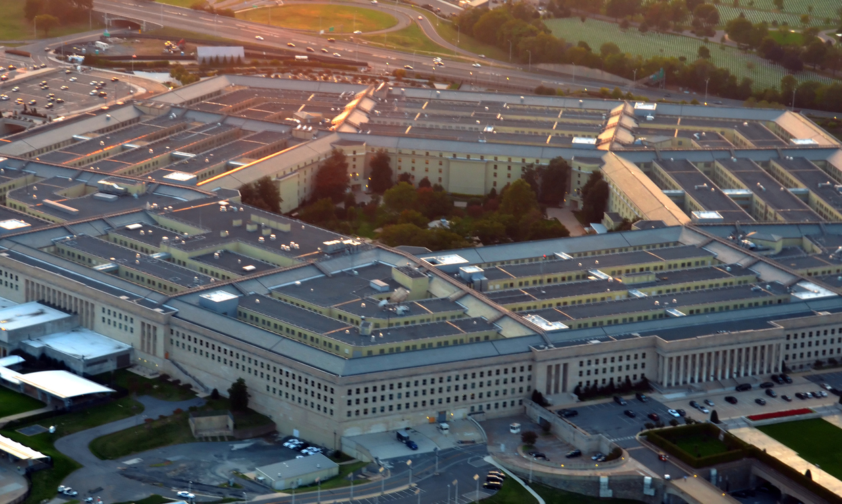
Explainer: What is the NDAA and why should you care about it?
Updated July 10, 2023.
One of the biggest pieces of legislation you might not have heard about is the National Defense Authorization Act.
The NDAA is the country’s annual defense spending authorization bill, setting our military budget for the next year. The House of Representatives puts forward its bill first, then the Senate introduces its own version, followed by a conference committee – a group of members from both the House and Senate – combining the two versions into one final bill.
But what exactly is in the NDAA? How does it work? And why does it matter?
Here are some answers to those and other frequently asked questions.
What is the NDAA?
As the annual bill authorizing defense spending for the following year, effectively crafting and passing the NDAA is one of the most important yearly responsibilities of Congress and influences the U.S.’ ability to carry out various strategies for years to come.
When it comes to spending, authorizations are Congress’ traditional way of allowing future actual spending, or appropriations. So rather than a spending bill, we can think of the NDAA like a permission-to-spend bill. But because defense appropriations closely follow the NDAA’s authorization amounts, the NDAA itself is the key forum to debate defense spending levels and priorities.
The bill is also a big opportunity for all members of Congress, not just those in traditional defense-related committees, to have an impact on our foreign policy by introducing amendments. Sometimes, these provisions, such as Rep. Barbara Lee’s yearly amendment to repeal the 2002 Authorization for Use of Military Force (AUMF), can advance a more realistic and restrained foreign policy. Others, such as Rep. Kinzinger’s amendment in 2022 to spend $100 million training Ukrainian pilots, sought to more deeply involve the U.S. in foreign conflicts not tied to its vital national interests.”
That’s why what gets put in and taken out of the NDAA each year is important to keep an eye on.
What does the NDAA cover?
The NDAA authorizes appropriation of funds for the Department of Defense, along with defense activities in other federal departments and agencies (think intelligence work or nuclear programs within the Department of Energy).
That is a lot of line items to pack into one bill, and as such the text usually runs hundreds of pages.
In fiscal year 2023, the bill included hiring, weapons and equipment procurement, training, internal reporting on several topics, and dozens of projects within the DOD’s various agencies and service branches, such as major weapon systems assessments and ship building programs. Each year, members of the House and Senate Armed Services Committees take the lead drafting these various parts of the base bill.
If DOD or defense-related programs need to be funded, they will be mentioned in the NDAA.
How does the process work?
As with most congressional processes, getting the NDAA through is complicated. But this is how it usually works:
- The president submits a budget request to Congress. This request lays out what the administration would like to see in defense appropriations and policy.
- The House and Senate Armed Services Committees (HASC and SASC), in this case also known as the authorizing committees, hold subcommittee hearings on the budget. All the panels hear from military and defense leadership about the resources they seek to execute defense strategies.
- After hearings have been conducted, the full committees get started on “markup”, a process that includes discussion, amendment, and approval of the bill’s text.
- Once the bills on either side of Congress make it out of HASC and SASC, they are scheduled for consideration on the House and Senate floors. This is when debate on the full bill begins and more amendments are considered.
- After the House and Senate have passed their bills (or taken up the other side’s version) and added amendments, either versions bounce back and forth until both chambers have passed identical bills, or a conference committee is appointed to settle the differences.
- When the conference committee has resolved all differences and produced a combined bill that can be debated and approved by both chambers, the NDAA is sent to the president to sign or veto.
Along this path, there are lots of opportunities to get sidetracked or slow down the process.
How long does the NDAA take?
Getting the NDAA to the president’s desk takes a while. Typically, the president’s budget request is released in February, although it’s often delayed. Subcommittee hearings take place in the early spring, markup and debate happen through the summer, and the conference committee begins reconciling the House and Senate versions in the fall. The goal is usually to get the NDAA done by the beginning of the fiscal year on October 1.
This year, the process is mostly on track for now, but it could get derailed at any time.
What is important to look out for in the NDAA?
Despite the length and complexity of the bill itself, most of the headline-making legislative action comes in the amendment process.
Hundreds of proposals each year get offered as potential amendments to the NDAA. Because it’s seen as a “must-pass” bill, members sometimes try to hitch their pet projects ― not all of them defense-related ― to the text. Though most amendments aren’t ruled in order in the end, and fewer still get individual recorded votes, they can be important platforms for changing foreign policy.



